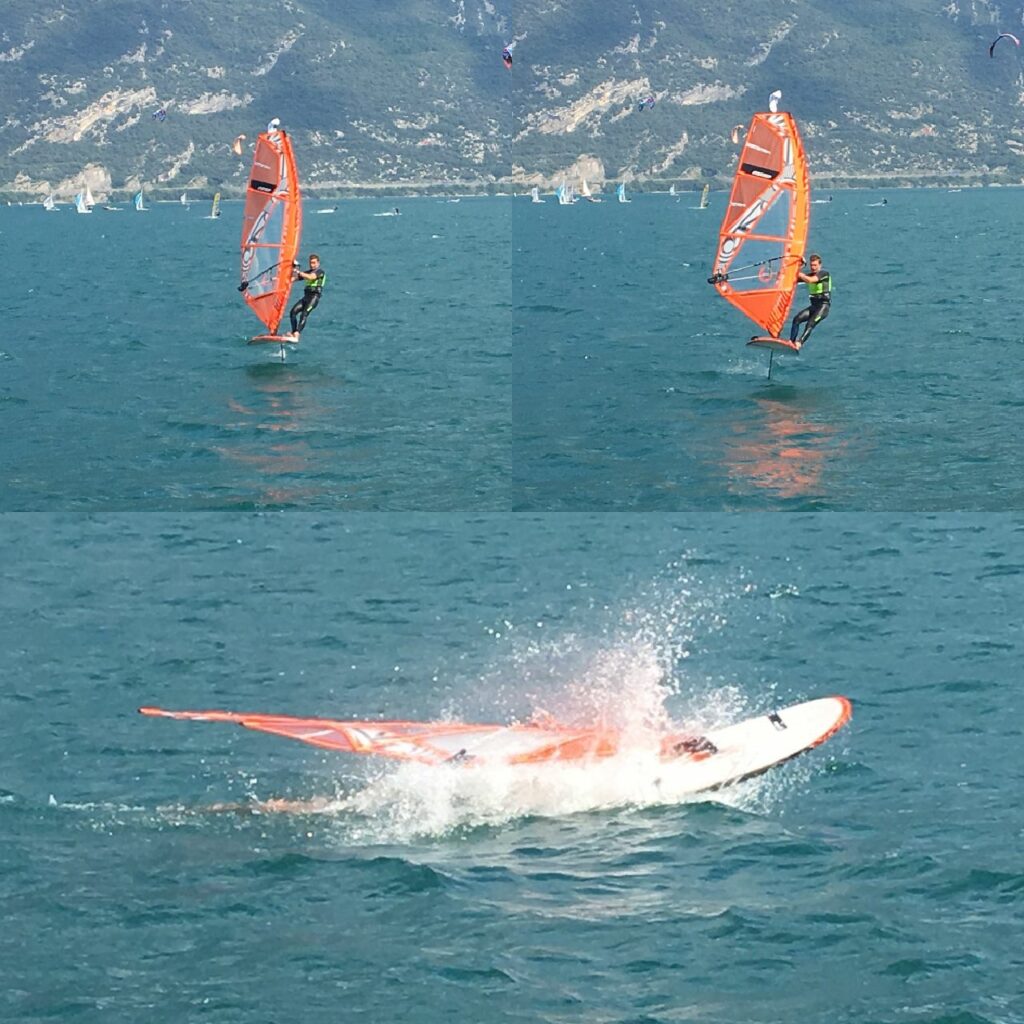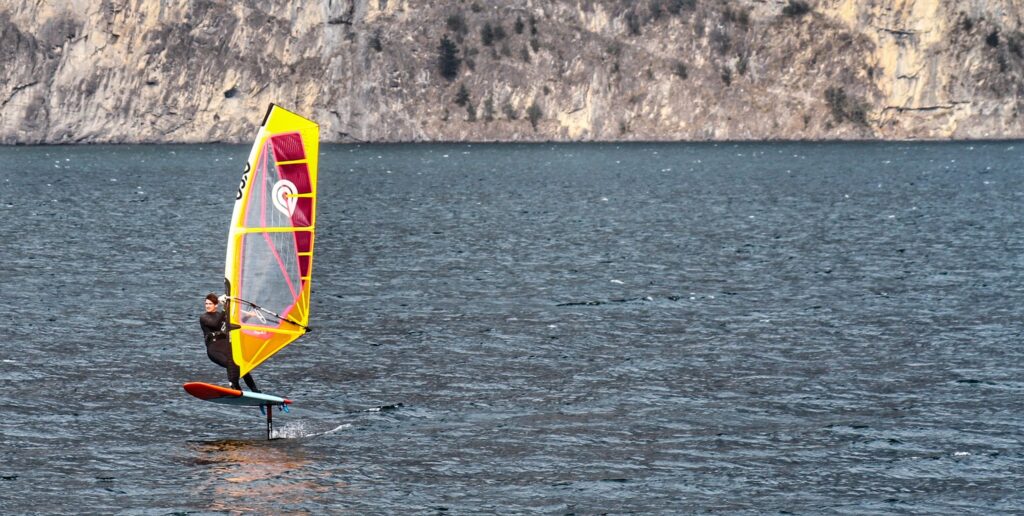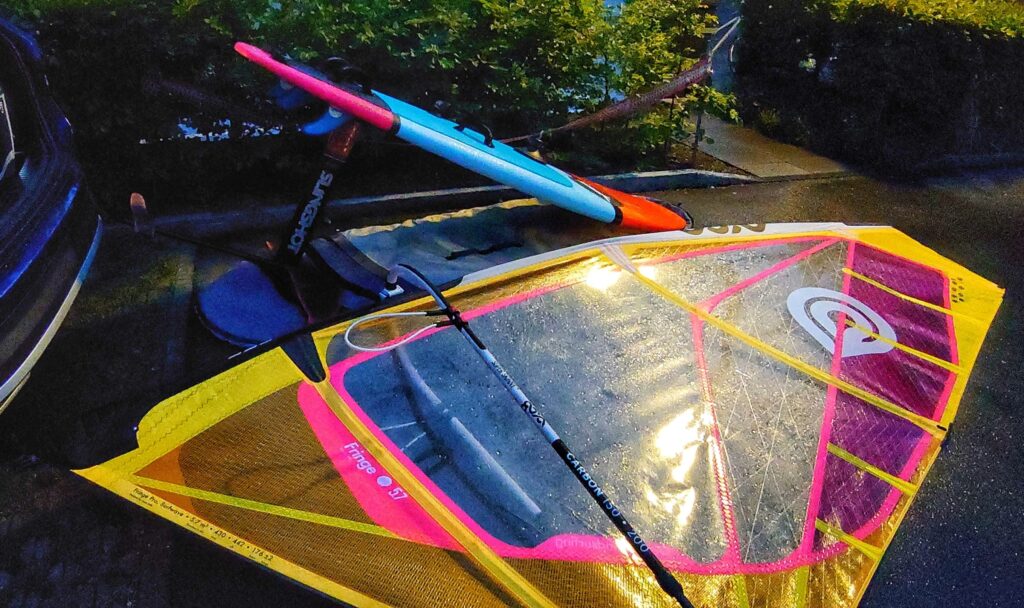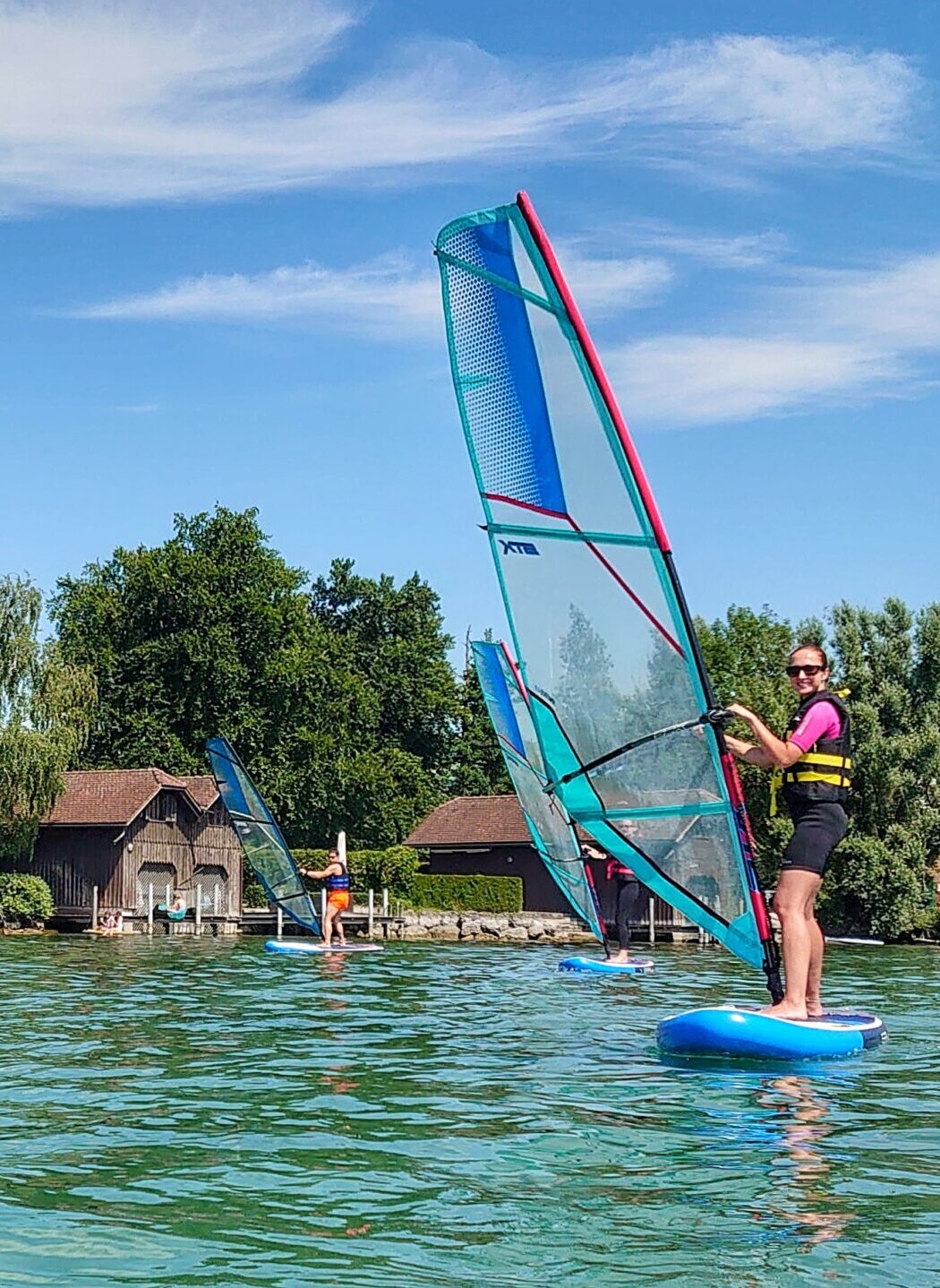Learning to Windsurf Foil has been something I’ve wanted to do for quite some time. I first discovered Windfoiling back in 2000 when I saw Rush Randle and Kevin Ozee foiling at Lower Kanaha in Maui. The rudimentary foils they were using then were often to be seen sitting in the then Neil Pryde Maui (now Adventure Sports Maui) store. But, at that time the foils were heavy and unrefined constructions far from the equipment that is available to any of us these days and not available for the general public to try at all.

Fast forward 20 years, and foiling has become available to the masses. There are a number of brands offering windsurf-specific or crossover foils, and there is more equipment coming on the market on almost a daily basis.
I first tried foiling myself in 2017 on one of the original Bic Foils. My first session was what I considered to be reasonably successful, as I managed to fly for about 200m with relative ease. A couple of months later, I tried again on an RRD Foil, which was a complete disaster with a lot of crashes and no sustained flight. Third time is the charm they say and on holidays in Cabarete, I rented a foil and got some tips from ex-PWA pro Andy Pusch which saw me getting some sustained flights by the end of the session.
Lately, with the delivery of my Smik Mongrel and Slingshot Hoverglide windsurf foil, I’ve been getting out on the water as much as possible and spending a lot of time learning to windsurf foil.

Setup
In general, you want the centre of lift of the front wing between your feet. If you are overpowered, then you can set the foil backwards (or your foot straps or mast foot forward). This reduces the lift on the foil and helps you set down if you need to. In lighter winds, setting the foil forwards (or the foot straps/mast base backwards) will help give you more lift. As a basic rule, I have found it easier to sustain height with the centre of lift of the front wing situated between my feet.
Most of the equipment on the market today has a deep Tuttle finbox ,which does not allow much movement of the foil position unless your foil offers different fuselage positions (like the Slingshot). With these boards, any tuning will be down to moving the mast foot or footstraps. Some crossover boards, like the Smik Mongrel (which I am using) have tracks for a plate-mounted foil pedestal, which allows more fine-tuning possibilities.
For learning, using a shorter mast may make it less scary as you will not rise too high, and if you overfoil (go so high that the foil comes out of the water), the resulting drop when the foil loses lift is less harsh and easier to recover. Once you are comfortable, then you can move to a longer mast, which allows more room to correct if the foil starts rising too much.
A higher boom than when normal windsurfing will help you stand up a little straighter over the foil and offer more control.

Getting Going
At this point, very small movements in your body position affect the foil. Moving very slightly back will cause you to rise (and potentially overfoil), and moving forward will cause you to touch down.
Staying Up
Once on the foil initially, I found it easier to sail closer to the wind. This makes it easier to depower the sail and control speed. As the foil accelerates, it increases lift and thus turning downwind makes it feel like you will more easily overfoil and potentially get pulled over the front. Initially, practising closer to the wind than a beam reach seems to allow more control.
Once up, it’s possible to practice controlling the ride height by pushing forward gently and allowing a light touchdown, then shifting the weight back slightly to rise again. Repeat this again and again until you start to find the balance point where the foil will stay flying steadily at a reasonably constant height with only small corrections in body position.
Initially, I sailed with no back straps, which allowed me to move my back foot if necessary to help get the balance right. After successfully getting a few sustained flights under my belt, I put the back straps on and looked at tuning the foil to sit between the straps.
Downwind
I found that once I could get steady flights upwind, it was easier to unhook and keep the sail forward on extended hands as I turned downwind. Then I could push my knees and head forward if I needed to reduce lift.
With time and a bit more comfort, you can stay sheeted in, bear away and shift your hips a little further forward to help maintain ride height without over foiling.
Mistakes
One of my own most common faults I encountered was reverting to an overpowered windsurfing technique in the gusts. When I windsurf (on a wave board) as a gust hits, I tend to drop my hips, bend my knees and make myself compact to allow the board to float over the chop, accelerate and make it more difficult for the gust to pull me off my feet. With the foil doing this takes the weight off the wing, allowing it to lift and get out of control. When foiling, as the gust hits, you need to stay upright over the board and shift the weight forward to counteract the increased lift as the board accelerates in the gust. Almost like slalom technique, but with even more pressure into the board through quite straight legs.
Foiling has given me a newfound love of windsurfing here in Switzerland. Instead of buying an 8m sail and 130l freeride board to make use of the light wind conditions we tend to get here, I replaced my wave SUP with a windSUP/Foilboard, and now I can sail in the same light winds with my existing wave sail quiver. The learning curve of foiling is becoming addictive, and I can’t wait to get back on the water again at the end of every session.
What’s next?
Now with stable flight ticked off, I’ve been working on foiling gybes and from there who knows… That’s the beauty of foiling. For someone who’s been windsurfing for more than 30 years, learning to windsurf foil is allowing me to experience my windsurfing firsts all over again. First time planning, first gybe, first jump… It’s like I’ve turned the clock back 30 years and am experiencing my youth all over again, and I can’t wait for what the future brings.



3 Responses
Just to say I loved your article. I will use the info to try and maintain an even hight and not get catapulted in the gusts by over foiling. I sail in foot straps, and beginning to trust the harness as well.
Are you just learning to trust the harness in general or learning how to trust it in the foil. I would say it’s good to be comfortable in the harness fin windsurfing before fully committing to it on the foil.
Fantastic article.